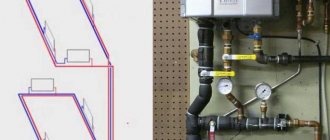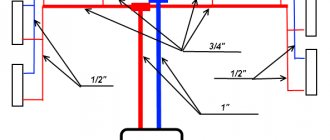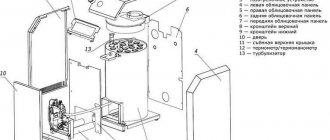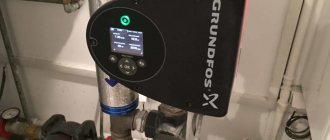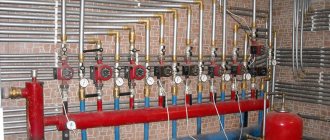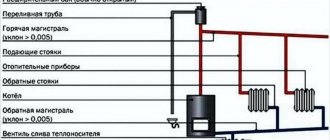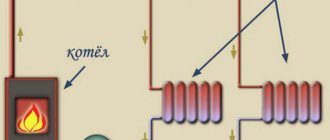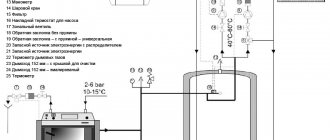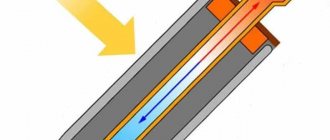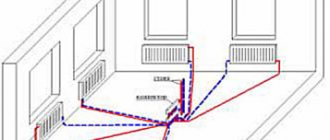The idea of heating a house with electricity looks attractive, because it is the most comfortable type of heating. But the cost of energy is cause for concern. Therefore, the homeowner wants to assess in advance what costs the electric boiler will incur - whether it is profitable or not to use this device, and what difficulties there may be.
Features of heating a house with electricity
If you do not take into account operating costs, the choice in favor of such a heating system can only be characterized positively:
- No chimney required.
- There is no risk of fire (provided the connection rules are followed), explosion and gas poisoning.
- No design or permission from government agencies is needed.
- Full automation. Unlike the gas analogue, it is safe to start the device in the absence of occupants for a long time.
- The heating output is regulated within a wide range without reducing efficiency.
- The boiler is inexpensive.
But there are also negative points:
- High electricity costs.
- Low reliability. The overhead power grid is the most vulnerable part of the infrastructure.
After storms and hurricanes, populated areas are the first to remain without electricity. Therefore, it is risky to make do with an electric boiler alone; it is recommended to additionally connect at least a low-power solid fuel device to the heating system as a backup. The list of units is on the website.
Electric heating using water
In this case, the operating principle of such systems is no different from other types of heating, except that electricity is used as an energy source. But electric water heating has a big advantage over direct heating - when the heating device is turned off, the coolant continues to give off heat to the rooms, and the temperature does not drop so sharply.
Some may think that heating a house or apartment using electricity is too expensive. However, the cost of installing gas heating, as well as preparing the project and approving the rework with the relevant authorities, can cost you even more.
In general, electricity is one of the safest sources of thermal energy. As a rule, in such heating systems, explosions, poisoning and accidents are practically excluded. And installation of heating does not require expensive projects and permits.
As is the case with gas boilers, autonomous electric heating can be either single-circuit or double-circuit. That is, in addition to directly heating the premises, thermal energy can be used for hot water supply.
Boilers for water heating
Naturally, the main part of any water heating scheme is the boiler, and in this case, an electric one. Modern devices of this type are devices characterized by high performance, safety, ease of operation and installation. Therefore, with the help of them it is possible to heat even large areas consisting of several rooms.
All models of electric boilers differ in the method of heating water, and therefore they are:
- electronic;
- heating elements;
- induction
But first, we will talk about the most common heating element boilers that are considered traditional. In general, a heating element is a special tubular heater. By the way, such electric boilers can heat not only water, but also other liquids that are used as a coolant.
These devices are compact, have an attractive design and, as a rule, are inexpensive. And their power is usually regulated by turning the heating elements off and on. And therefore, if one of them fails, the device continues to function.
But such boilers have their drawbacks. Thus, during operation, scale forms on heating elements over time; which means they need to be cleaned regularly. If this is not done, scale will increase energy consumption and reduce efficiency.
The next category is induction boilers. Such devices heat the coolant using electromagnetic induction. And the main element here is a special induction coil, which is placed in a sealed compartment.
The advantage of such an autonomous heating boiler is that its core heats up in just a few minutes; and the heating element itself rarely fails. Almost no scale is formed during operation, and any coolant is suitable for heating.
But this also has its drawbacks. Thus, induction boilers can only be used in closed heating systems. In addition, they have relatively large dimensions, and they cost a lot compared to other types of similar devices.
Electrode boilers have the advantage of saving electricity. These devices heat water using special electrodes, or rather, using the latter, an electric current is passed through the water and the liquid is heated.
What you need to know before installing heating
The power of the line supplied from the power transmission line is limited. According to Decree No. 334 of the Government of the Russian Federation, which came into force in April 2009, energy networks are required to allocate 15 kW per household. At first glance, this is a lot: on average, an electric boiler of this power can heat a house with an area of up to 150 square meters. m.
But there are other energy-intensive receivers in the home and on the property: a boiler, washing machine and dishwasher, oven, microwave, equipment in the workshop, etc. It is necessary to assess the level of consumption and calculate how much is left for heating.
If you apply to Rostekhnadzor, the limit may be raised. But in some regions the state of the networks does not allow this. There is a solution, but it can be expensive: sometimes a homeowner has to pay to replace a transformer at a substation in order to connect a powerful heater.
Example of electricity consumption
For clarity, you can consider the organization of heating in a house with an area of 90 square meters. m, located in the Moscow region. There are electrical appliances with the following power consumption:
- water heater and washing machine: 1.5 kW each;
- 2 socket groups with 10 A circuit breakers, i.e. designed for a power of 220 × 10 = 2.2 kW each;
- internal and external lighting, supply and exhaust ventilation system with recuperator: total 1 kW.
The kitchen stove runs on bottled gas.
The total power consumption is 8.4 kW. 15 - 8.4 = 6.6 kW remains for heating.
The required rated power of the boiler corresponds to heat loss in the coldest week of the year + a reserve of 20%. To calculate them, a complex calculation is required, but a less accurate simplified version can be applied to a standard house: Q = S × K, where
Q—heat loss in the coldest week, W;
S - heated area, sq. m;
K—specific heat loss, W/sq. m.
Depending on the region, K is taken equal to a fixed value:
- southern regions: 60-80;
- central part of the country: 90-110;
- northern districts: 120-200.
According to the condition, the house is located in the Moscow region, we can assume that K = 100 W/sq. m.
Taking into account a reserve of 20%, the power of the heat generator in the coldest week will be:
W = 90 × 100 × 1.2 = 10,800 W = 10.8 kW.
Conclusion: to help the 6.6 kW electric boiler, it is necessary to install a solid fuel one - 4.2 kW. Or one combined one, running on wood and coal, but with heating elements in the heat exchanger.
About electric boilers and the availability of electricity
So, an electric boiler. To heat an average house of 100 square meters. meters, an electric boiler with a capacity of 10 kW is required (more on power calculation below). A simple calculation from a physics course shows that with a supply voltage of 220 Volts, the current load of the network to power one such boiler will be 45 Amperes. If we add to 10 kW the 10 kW needed to operate other electrical equipment and lighting in the house, we get the power that needs to be requested to connect 20 kW.
Hence the first problem with using an electric boiler for heating: such power is not available for connection everywhere.
Important! Before purchasing an electric heating boiler, you need to agree on its power and connectivity with the supervisory authorities (Energonadzor) in your area. A boiler installation project may be required.
Which electric boilers are most often used to heat a private home?
There are 4 varieties:
- heating elements;
- electrode;
- induction;
- heat pumps.
The first ones are the most common. Their advantages:
- affordable price;
- low requirements for the coolant: it only needs to be desalted once before the first use;
- simple and inexpensive repairs;
- soft start (prevents power surges in the network).
Electrode boilers are cheaper than heating elements and are simpler in design. But the user has to prepare the coolant according to the recipe. At the same time, its chemical composition is constantly changing, so every 1.5 months it is necessary to pour new liquid into the circuit. This makes operation difficult.
Induction boilers, on the contrary, are able to work with any coolant, but their price is 4 times higher than that of heating elements.
Both of the latter types have a common drawback: their design does not provide for a soft start, so when switched on, voltage surges occur in the network.
If funds allow, it is advisable to purchase a boiler that operates on the principle of a heat pump. It is beneficial to use it. For every kilowatt of electricity consumed, the device produces up to 5 kW of heat. But the system will require a lot of money: in addition to purchasing an expensive device, you will have to pay for the construction of an extensive external heat exchanger (a long circuit of pipes in the ground).
Conclusion
Despite all the advantages of an electric boiler, we see that the cost of heating with a classic type electric boiler (TEN) is high. Gas heating will be cheaper, although the profitability of gas heating will appear in the third or fourth year after investing in gasification of the house.
In addition, power outages are possible. This is why professionals advise using an electric boiler in tandem with an additional heating boiler, for example, using solid fuel.
©Obotoplenii.ru
Other articles in the section: Heating boilers
- Heat exchangers for gas boilers: differences in materials
- Kiturami liquid fuel boilers: descriptions of popular models
- Circulation pump in the design of a gas boiler
- How to choose the right solid fuel boiler
- Load control of electric heating boilers: load relay, priority relay, load switches
- Types of modern electric boilers: description, device diagram and operation
- Installation of a wall-mounted gas boiler: canopy of a gas boiler and preparation for connection
Electricity costs for heating a house
The boiler reaches its rated power mode only during the coldest five-day period of the year. The rest of the time it operates with reduced heating output. On average it is:
- in the winter months (December, January and February): 50% of nominal;
- in November and March: 30%;
- in October and April: 15%.
For example, a 10 kW boiler will consume during the heating season:
- During the winter months: 10 × 0.5 × 24 hours × 90 days = 10,800 kWh.
- For November and March: 10 × 0.3 × 24 × 61 = 4,392 kWh.
- For October and April: 10 × 0.15 × 24 × 61 = 2,196 kWh.
Total: 10,800 + 4,392 + 2,196 = 17,388 kWh.
In 2021, in the Moscow region, the tariff for houses with electric stoves and heating corresponds to 3.89 rubles/kWh. This means that the costs for the season will be 17,388 × 3.89 = 67,639.32 rubles.
Autonomous electric heating
Thanks to the wide variety of models of heating devices, modern consumers have the opportunity to choose the optimal system for an object of any purpose.
| Monday | Open 24 hours |
| Tuesday | Open 24 hours |
| Wednesday | Open 24 hours |
| Thursday | Open 24 hours |
| Friday | Open 24 hours Now open |
| Saturday | Open 24 hours |
| Sunday | Open 24 hours |
What affects electricity consumption
All boilers convert the energy used into heat in a 1:1 ratio. With 100% efficiency, negligible losses in wires and connections are neglected. The exception is heat pumps, but they are still rarely used.
Thus, there are only 2 ways to reduce electricity consumption:
- Reduce heat loss. To do this, the home is covered with mineral wool or polystyrene foam, and the cracks are sealed.
- Optimize the operation of the boiler in order to eliminate excessive consumption of energy resources.
The second problem is also solved in 2 ways:
- Using weather-sensitive automation. Such a system promptly warns the boiler about the onset of warming, and it manages to reduce power without overheating the room.
- Programming. A model with this function, according to user settings, reduces heating output when residents are at work or sleeping. The rest of the time the device returns to normal mode.
For inexpensive heaters, the first option is not suitable. They do not have the function of connecting weather-compensated automation. Then it is recommended to install at least a remote thermostat: it maintains the room temperature at a given level.
It is possible, without reducing consumption, to reduce financial costs. They are switching to differentiated metering of electricity consumption with a big discount at night (RUB 1.68 instead of RUB 3.89). The heating system is equipped with a heat accumulator - a large capacity in which the boiler, within a grace period, raises the temperature of the working environment to +98˚C. During the day, boiling water is gradually supplied from it through the mixing unit into the circuit as needed; the heater does not work at this time.
In this case, you will have to pay 17,388 × 1.68 = 29,212 rubles for the season. But there is a nuance: the rated power of the boiler should be twice the design power, because at night it works both for heating and for “charging” the heat accumulator. For the example given, a 20 kW unit will be required.
Other heat sources
To assess how costly heating with electricity is, it is necessary to compare it with other energy sources. It should be taken into account that the efficiency of fuel boilers is far below a hundred: for gas boilers it is about 93%, for wood and coal boilers it is about 85%.
Below is the cost per 1 kWh for different types of fuel:
- Natural gas: 0.68 rubles, taking into account efficiency - 0.75 rubles.
- Oak firewood: 1.09 and 1.36 rubles, respectively.
- Coal: 1.33 and 1.57 rubles.
- Wood pellets: 1.51 and 1.78 rubles.
- Liquefied gas: 1.99 and 2.13 rubles.
- Diesel fuel: 3.51 and 3.90 rubles.
In each case, heating costs for the season will be (for 17,388 kWh):
- natural gas: RUB 13,041;
- oak firewood: RUB 23,648;
- coal: RUB 27,300;
- wood pellets: RUB 30,950;
- liquefied gas: RUB 37,036;
- diesel fuel: RUB 67,813.
The average price level is given.
Profitable proposition
Our company offers you to purchase high-quality equipment for creating autonomous electric heating systems at the best prices. Experienced specialists will help you choose exactly the equipment that is ideal for your home and tell you what is best to purchase to create comfort at a reasonable price.
Periodic promotions and discounts will help you save significantly when purchasing equipment. At the same time, our electric radiators not only meet high world quality standards, but also have an economical energy consumption mode. Therefore, their purchase will reduce costs not only during the initial purchase, but will also allow you to save money during operation. We guarantee you 100% quality, reduced energy costs with the right approach to design and installation.
Popular electric radiators:
